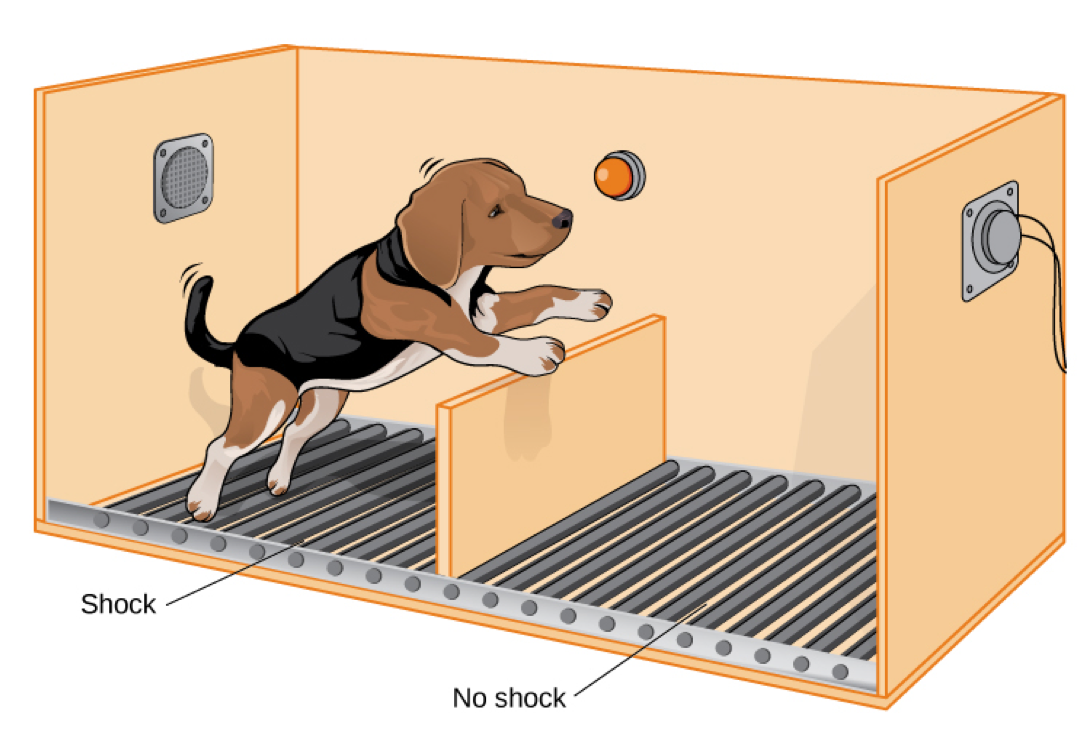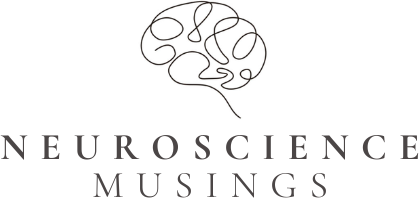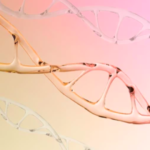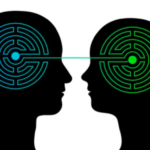
For a long time, it was believed that we learn helplessness by experiencing situations in which we have no power. However, neuroscience suggests that, by nature, we feel helpless until we learn that we can control the outcome.
What do these new findings mean for our actions and beliefs? And how can we learn that we have power?
To start, let’s look at where the initial Learned Helplessness theory came from:
You might be familiar with the (quite cruel) dog experiment conducted by scientists Seligman & Maier in 1967, where they placed dogs in a box and delivered electric shocks to their legs. They divided the dogs into two groups: Group 1 could stop the electric shocks by pressing a lever inside their box. Group 2 also had a lever, but pressing it did nothing to change their adverse situation.
Twenty-four hours later, the researchers placed the dogs in a different test environment (called the “shuttle box,” see image below). The dogs were placed in a section where a shock was delivered. However, just a small jump away on the other side of the box, no shocks were given and it was safe.
The experiment showed that all the dogs in Group 1 jumped over the barrier to the other side and escaped their uncomfortable situation. However, most of the dogs in Group 2 did not even try to escape the shocks and simply lay down, enduring their situation until the researchers ended the experiment.

The learned helplessness theory that emerged from the experiment suggested that if we learn that outcomes are independent of our responses— that nothing we do matters—then we will internalize that lesson and carry it with us to other situations. Even if, objectively, we are not helpless, we will feel helpless. And so, we will be less likely, whatever future problems we face, to take actions to better our circumstances.
This theory was repeated in different experiments with mice, monkeys, and people and it held up. Animals and humans repeatedly showed the same helpless behaviour and the theory became one for the most cited explanation for clinical depression: when we repeatedly face situations where we can’t control the outcomes—whether at home, school, work, in our health, finances, or relationships—we eventually learn to stop trying. Our brains signal us to give up and “don’t bother”. We get depressed, turn inward and become passive, just like the dogs in the shutter box.
This theory makes sense, right?
Yes, until neuroscience enters the picture. Maier, who worked on the original experiment in 1967 as a graduate student in psychology, later became a neuroscientist. He revisited the theory from a neurological perspective – examining neural circuits, receptors, and neurotransmitters instead of observed behaviour. His finding revealed that the previous conclusions were all backward!
In essence:
We do not learn helplessness; instead, our brains assume helplessness until we learn that we have power and can control the outcomes in our lives!
If you have read the first Nervous System article where we covered stress responses (accessible here), you might recall that our bodies can enter a “freeze” state when we find ourselves in stressful situations. Research suggests that this state of paralysis is the most hardwired, instinctive biological response we have to threats. Freeze is the most primal response meaning it was favoured early in evolution. The other stress responses, like fight or flight, require us to take action—but first, we must learn that we have the power to do so.
Now,
How do we learn that we have power?
Genetics aside, to understand that we have an impact in this world, we need to experience that our actions make a difference. This process starts at birth: As babies, we only have our voice to communicate a need. Does our caretaker respond to our cry? As toddlers, do our parents consider our needs, or are we expected to follow their rules strictly, regardless of our own desires? As teenagers, do our friends respect our boundaries, or is what we say disregarded? Additionally, are we surrounded by people who understand their own power, or did we grow up witnessing that it’s better to keep silent and “endure life”?
You see where I’m going with this: From the moment we are born, our experiences—both what we live through and what we observe in others—shape the understanding we develop of our influence in this world. This, in turn, shapes our perceived power over the outcomes in our lives. (In addition, what I’m describing also shapes our self-esteem, self-efficacy (the belief that we can achieve our goals), and many other important psychological factors that contribute to a healthy and resilient personality.)
Before get into changing beliefs, I want to let you know that if you enjoy the articles and would like to support my work, here’s a way: Ko-fi.com/neurosciencemusings. In case you choose to do so: Thank you!
What does all of that mean for our own actions and beliefs today? – 4 steps to change a belief
Best case scenario: You had the chance to develop healthy self-beliefs and patterns of behaviour early in life. Congratulations – keep going!
But even if not, there’s good news: We can still change our beliefs (and resulting behaviour) in adulthood.
How?
In short, to adapt a new belief, we need to experience that this belief is true.
Step 1: Formulate a desired belief
For example, Alex wants to believe that his voice matters and has an impact on the outcomes in his life. So, the new belief (i.e., his hypothesis to test) could be: “My voice matters.”
Step 2: Find proof that the belief is true
Pick a low-risk situation and start small.
For example, the next time Alex’s friends are deciding what to do on the weekend, he can make a different choice. Instead of withdrawing from the brainstorm as he usually does, he can voice his preference to do X over Y or suggest something completely new (Z). If his friends are open and they end up doing X or Z, Alex has evidence that his voice impacts the outcome.
This scenario has a very low barrier to entry as it’s tested with people he has a good relationship with and who should be open to his voice in the first place. It’s a safe space to start and build from.
Step 3: Reinforce the belief
Go bigger. After gaining evidence that supports our new hypothesis, we can test it in other areas of our lives and in larger contexts. If we truly want to believe something, we need repeated evidence and lived experiences that align with the new belief. It needs to feel true to us; otherwise, we won’t fully believe it.
For example, in the next meeting at work, Alex can build on his gained confidence and propose a more significant project or lead a team initiative. As his contributions begin to shape projects or influence decisions, his belief in the power of his voice will continue to grow.
Reinforce the belief many times and in different contexts.
Step 4: Has the belief emerged in your self-image?
How do we know if we believe something? When we adopted a belief, our thoughts, emotions, and actions align with that belief naturally and consistently. It becomes part of our self-image and feels right and true to us.
For example, now that Alex believes that his voice makes a difference, he takes action and speaks up when he finds himself in a situation he does not prefer, without overthinking. His internal dialogue reflects his belief (e.g., he sees his input as valuable rather than talking himself down), and when opportunities arise to contribute with a skill, his emotional response might now be excitement rather than avoidance.
Overall, changing a belief requires repeatedly lived experiences that serve as evidence, confirming our new belief to be true. We cannot force ourselves to believe something; we need to live the experience.
Take away thought
All of us have limiting beliefs to some extent. This is not a problem per se, but if we feel dissatisfied with patterns in our lives, it’s worth taking the time to reflect and make a conscious effort to identify our own beliefs. If we do not actively challenge unhelpful beliefs, they can easily impose limit onto our reality, binding us to something that is nothing more than a mental barrier.

What do you think?
As always, you can find me on Instagram @neuroscience.musings.
Best regards,
Sarah
Resources:
- Maier, S. F., & Seligman, M. E. (2016). Learned helplessness at fifty: Insights from neuroscience. Psychological review, 123(4), 349.
- Maier, S. F., & Jackson, R. L. (1979). Learned helplessness: All of us were right (and wrong): Inescapable shock has multiple effects. In Psychology of learning and motivation(Vol. 13, pp. 155-218). Academic Press.
- Seligman, M. E., & Maier, S. F. (1967). Failure to escape traumatic shock. Journal of experimental psychology, 74(1), 1.
- https://bigthink.com/neuropsych/learned-helplessness-imaginable/
- https://www.forbes.com/councils/forbescoachescouncil/2022/06/21/the-theory-on-learned-helplessness-has-been-debunked-heres-what-that-means-for-leaders/


